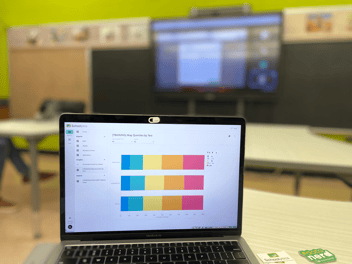
“Data-driven instruction” is a surprisingly polarizing term given the underlying goal: to use student performance and other metrics to inform a more personalized approach to learning.
It’s not as if the importance of data is being undersold; in fact, 86% of educators believe that using data is an important part of being an effective teacher.
So how did “data” become a dirty word in some circles of education? And what prevents some educators from using data to inform their instruction?
Let’s take a look at 4 underlying causes that keep teachers from using data in the classroom.
Teachers Don’t Have Time to Actually Analyze the Data
It’s no secret that teachers are overworked. Their nights and weekends are already occupied with grading and lesson planning, leaving virtually no time to parse through test scores and assignment grades to personalize lesson plans further.
Part of what makes teaching a high-turnover profession - nearly 10% of educators leave the field every year - is the expectation that teachers complete a significant amount of their work outside of “normal” working hours. And analyzing classroom data is no exception: 57% of teachers say they don’t have enough time during the school day to use data effectively, and nearly half believe that carving out that time falls under school/district leadership’s purview.
Teachers Rely on Out-of-date Data
You don’t read last week’s newspaper (this was written by a millennial, believe it or not) to learn about the latest news events. Yet oftentimes, we ask our teachers to be “data-driven” without giving them the most crucial element to achieve it: up-to-date data.
In fact, over one-quarter of teachers say that they can’t use data effectively because that data is not delivered in a timely manner.
Oftentimes, this is the result of a data process that requires manual intervention, like a web of spreadsheets or data that must be exported from a highly-specialized piece of software before it can be accessed by staff.
Teachers Have To Separate the Signal From the Noise
Modern classrooms are awash in data points generated by an ever-growing list of software and tech tools designed to make teachers’ (and students’) lives easier. But sometimes, this can have the opposite effect: 34% of teachers say that they struggle to use data effectively because there is simply too much of it!
With a constant stream of data from LMS, SIS, and assessment tools, how can teachers quickly figure out which insights are worthy of their precious time?
It may sound counterintuitive, but the answer to this technology overload might just be… more technology. A data platform that integrates with your school’s other software tools and contextualizes the most important data can help educators cut through the noise and focus on what’s important.
Some Teachers Face a “Gotcha!” Data Culture
Data is a powerful tool for personalized instruction. But far too often, data’s primary role in schools is to serve strictly as the primary (in some cases, only) teacher assessment tool.
Instructional coach consultant Becca Silver describes the culture these schools foster as a “Gotcha!” culture.
Transforming that “Gotcha!” culture into a supportive “I got you” culture can only happen if school leaders practice and model vulnerability. In practice, it means that three things must be safe to do throughout your school: giving/receiving feedback, making mistakes, and discussing public struggles.
Culture transformations don’t happen overnight, but by embracing vulnerability and talking about data in the context of growth and development, school leaders can turn the tide on a culture that makes vilifies data rather than seeing it as the powerful tool that it is.



